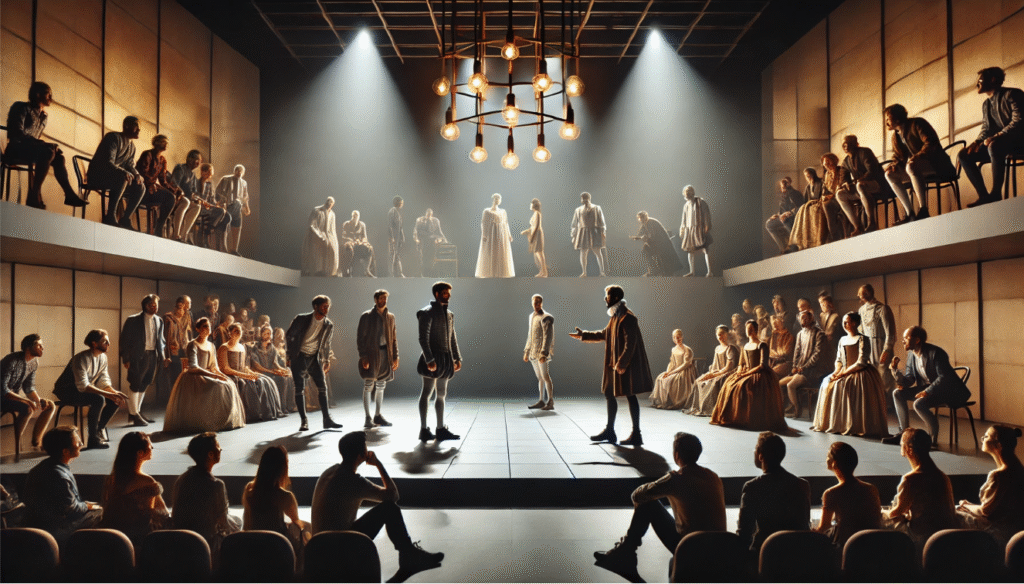
How the Role of Shakespeare’s Plays in Shaping Theatre Practices Transformed Modern Theatre
Have you ever wondered how the world of modern theatre came to be? 🎭 The answer might just lie in the timeless works of William Shakespeare. From iconic stagecraft to groundbreaking acting techniques, Shakespeare’s plays have played a crucial role in shaping theatre practices as we know them today. But how exactly did the role of Shakespeare’s plays in shaping theatre practices transform modern theatre? 🤔
In this article, we’ll explore the profound influence Shakespeare has had on the evolution of theatre, uncovering how his plays still shape everything from character development to stage design. Whether you’re a budding playwright, an actor, or simply a lover of theatre, understanding Shakespeare’s impact is key to appreciating the art form’s rich history and future. Keep reading to discover how his legacy continues to inspire and revolutionize the stage! 🌟
Table of Contents
ToggleI. Understanding Shakespeare’s Influence on Modern Theatre
William Shakespeare may have written his plays over 400 years ago, but his impact on modern theatre is undeniable. 🌍 Whether you’re a student, actor, or theatre enthusiast, understanding how his work has shaped contemporary theatre practices can deepen your appreciation of the art form and help you improve your own craft.
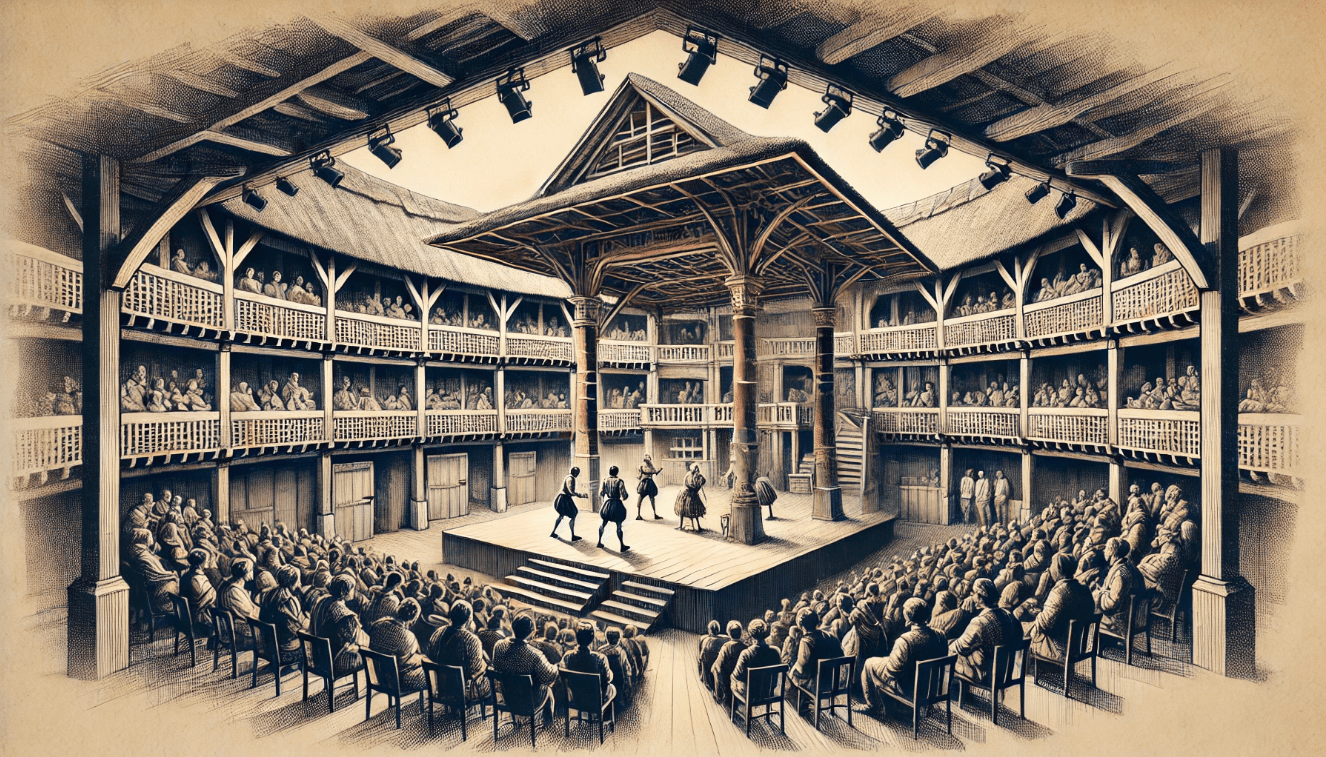
The Power of Shakespeare’s Characters
One of the key ways Shakespeare revolutionized theatre was through his complex characters. Unlike the simple, one-dimensional figures in earlier plays, Shakespeare’s characters are multi-faceted and psychologically rich. Think about Hamlet’s internal struggles or Lady Macbeth’s ambition. These layered personalities set a new standard for character development in theatre and paved the way for more nuanced, realistic portrayals in modern performances. Today, actors continue to draw inspiration from Shakespeare’s character-driven approach. By focusing on emotional depth and inner conflict, performers can make their roles more relatable and dynamic.
Shakespeare’s Influence on Playwriting
Shakespeare wasn’t just a master of storytelling—he changed the way plays are written. His works were often a blend of tragedy, comedy, and history, breaking down traditional genre boundaries. This genre-blending is now a common technique used in contemporary theatre, where playwrights mix different tones and styles to create more engaging, unpredictable narratives. 🎭
Modern plays often feature the same type of compelling dialogue and conflict that Shakespeare is known for. His use of soliloquies (long speeches where characters speak their thoughts aloud) remains a powerful tool for writers to expose a character’s inner world. Today’s playwrights continue to build on Shakespeare’s structure, using these techniques to drive stories forward and reveal deeper truths about human nature.
The Evolution of Stage Design
Shakespeare’s plays were performed in open-air theatres, like the Globe Theatre in London, with minimal set design. 🎨 While modern theatres have far more elaborate sets, this simplicity in stagecraft had a lasting influence. Shakespeare’s minimalist approach forced directors to rely more on the actors’ performances and the audience’s imagination, rather than complex visual effects. This focus on storytelling and human connection remains a hallmark of theatre today.
Modern productions often use this same principle—creating meaningful performances without relying solely on extravagant technology. Instead, directors focus on creating immersive experiences through dialogue, character interactions, and subtle stage elements that resonate emotionally with audiences.
The Lasting Legacy of Shakespeare’s Language
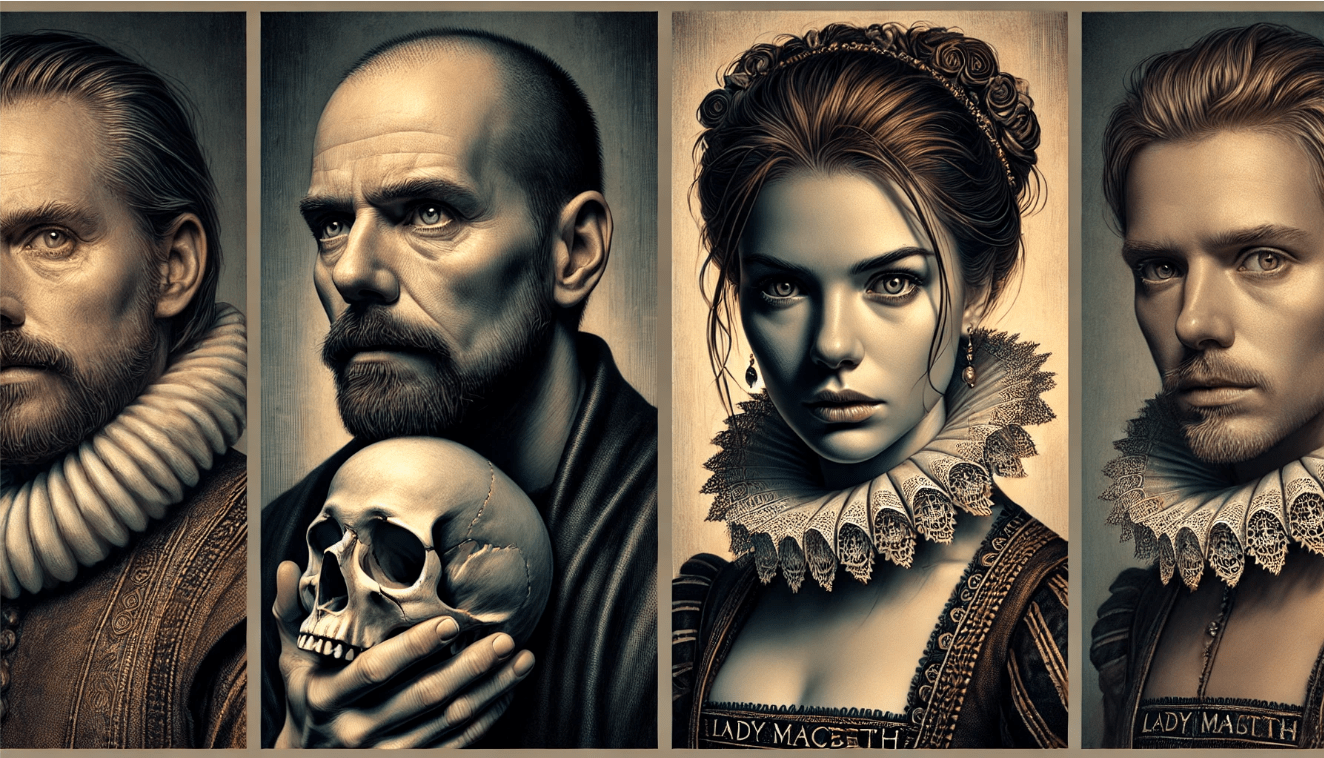
Shakespeare’s use of language also plays a crucial role in shaping modern theatre. His ability to manipulate words, create rhythm, and evoke emotion through speech revolutionized how playwrights and actors approach dialogue. While Shakespeare’s early works might seem challenging due to their Elizabethan English, modern productions still embrace the beauty and power of language. 🎤
Many contemporary playwrights and actors use Shakespeare’s techniques—such as metaphors, wordplay, and poetic language—to create dialogue that captivates audiences and adds depth to their performances. In fact, many actors still study Shakespearean text to sharpen their skills in delivering lines with emotional resonance and dramatic impact.
II. Shakespeare’s Theatre: The Foundations of Modern Theatre Practices
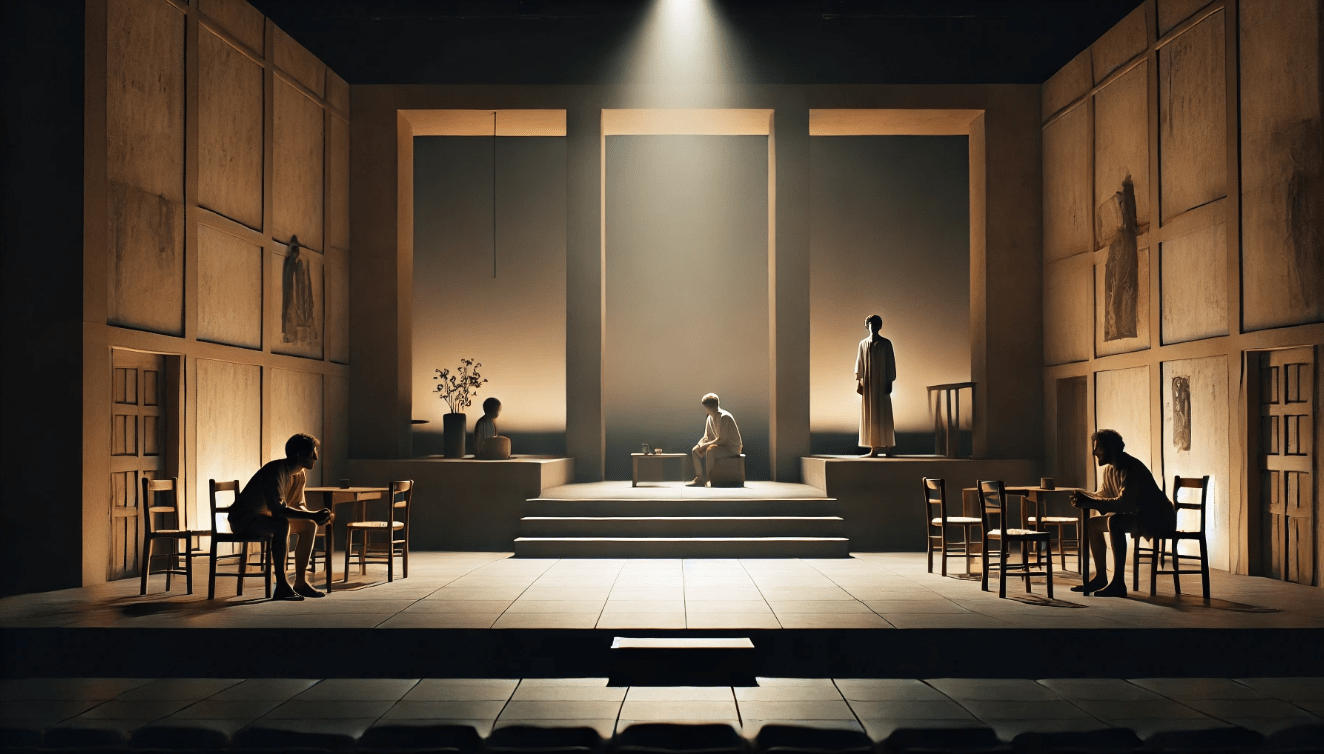
Shakespeare didn’t just write plays—he helped establish the very foundations of modern theatre as we know it today. From stage design to performance style, his influence is woven into the fabric of contemporary theatre practices. Let’s explore how his original theatre settings laid the groundwork for today’s theatrical innovations. 🎭
The Globe Theatre: A Model for Modern Staging
Shakespeare’s plays were first performed at the Globe Theatre, an open-air venue that played a major role in shaping stage design. The Globe was simple but incredibly effective, featuring a thrust stage that jutted out into the audience, creating an immersive experience. This design encouraged actors to engage with the audience directly, making the performance feel more personal and immediate. 👀
Today, many theatres still use a version of the thrust stage, which allows for close interaction between performers and the audience, enhancing the emotional impact of the performance. Even large, modern venues often borrow this style for specific productions to encourage intimacy in what would otherwise be large, impersonal spaces.
The Role of Minimalist Set Design
Shakespeare’s productions were often staged with minimal set pieces, relying on the actors’ performances and the imagination of the audience. Costumes, lighting, and props were simple, but the focus was always on the language and action of the play. 🎨
This minimalist approach to set design has endured in modern theatre. Contemporary productions often avoid over-the-top, distracting set designs, instead focusing on powerful performances and subtle stage elements to evoke atmosphere and emotion. This shift towards simplicity allows the story to shine, just as Shakespeare intended. Directors today often adopt this approach, encouraging creativity and deepening the audience’s connection to the characters and their struggles.
Shakespeare’s Impact on Acting Styles
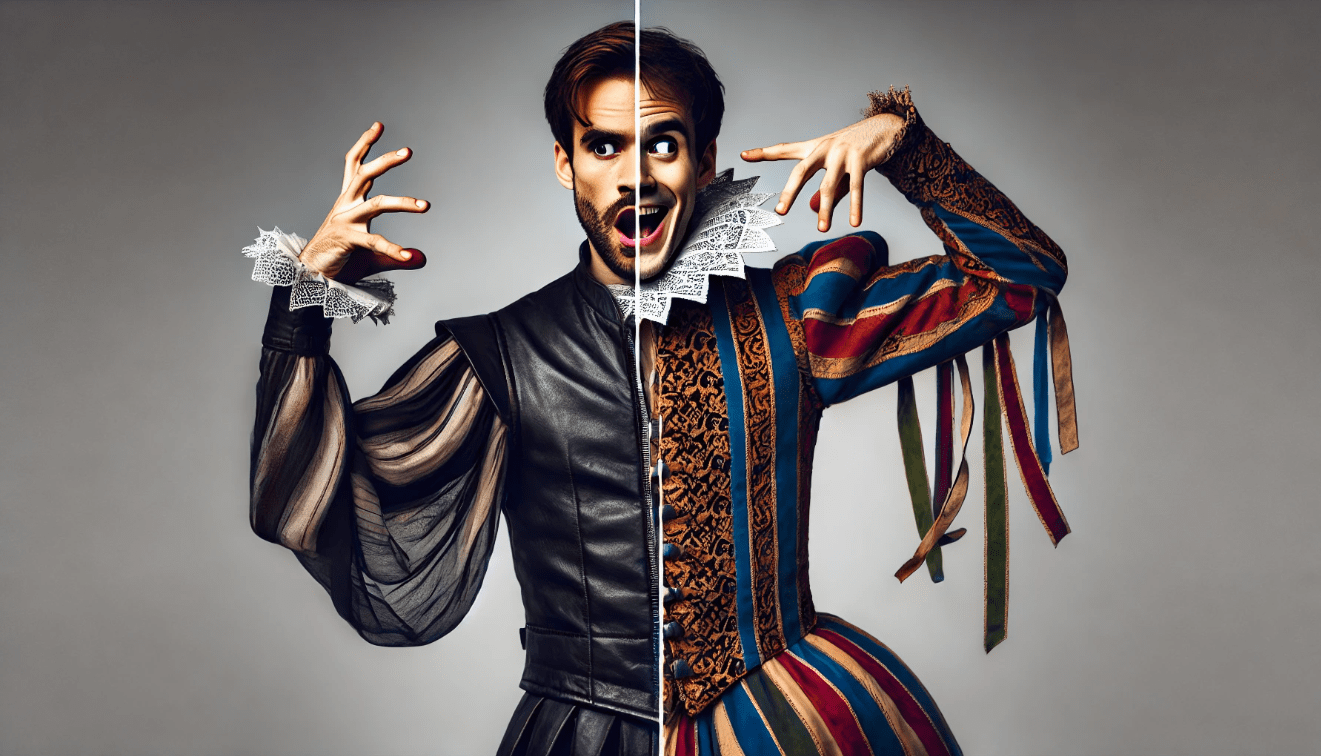
In Shakespeare’s time, actors had to be versatile, playing multiple roles and engaging with various performance styles—ranging from comedy to tragedy, and even the supernatural. The acting style was larger than life, with exaggerated gestures and vocal projection to reach audiences in open-air venues without microphones. 🎤
Modern acting still draws on this need for versatility. Today’s actors often need to switch between genres, from drama to comedy, much like the actors of Shakespeare’s day. What’s more, the exaggerated physicality and vocal skills required in Shakespearean performance have influenced modern acting techniques like “method acting,” where actors fully immerse themselves in the emotions and motivations of their characters.
The Evolution of Theatrical Genres
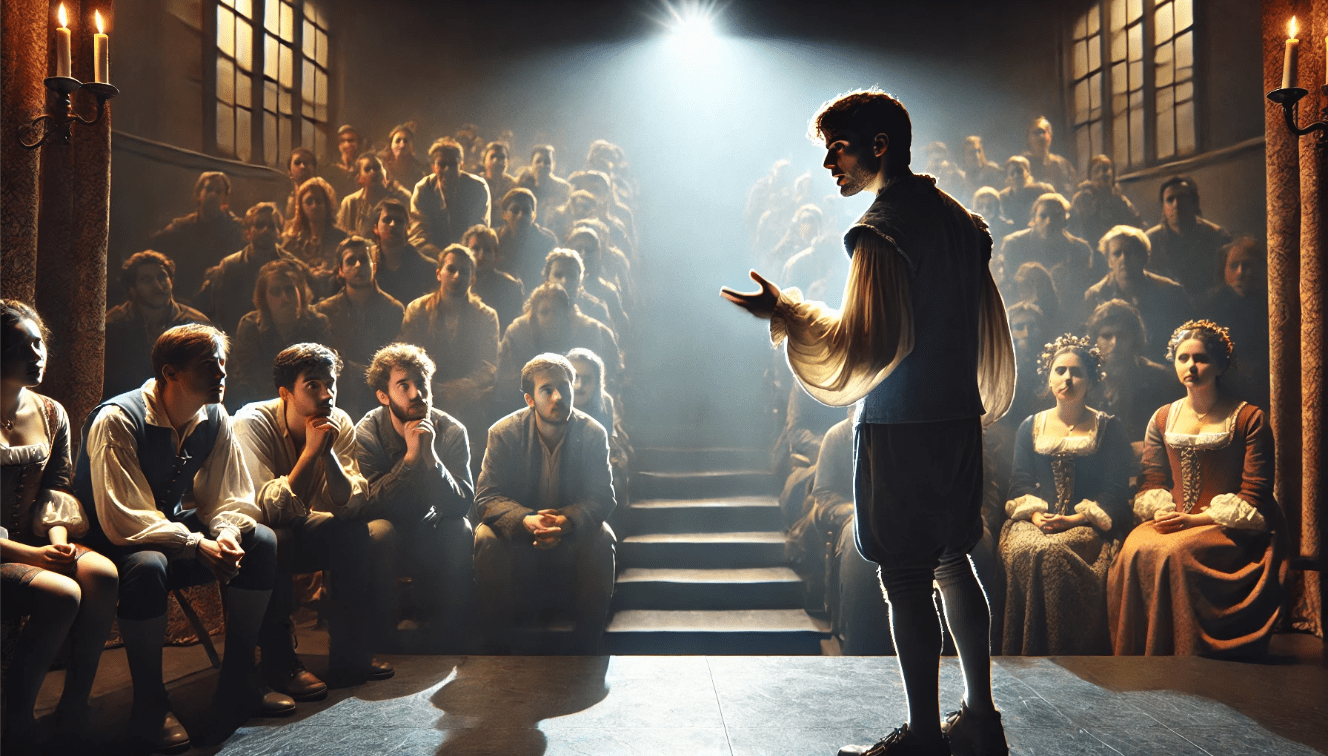
Shakespeare didn’t just master one genre—he blended genres, creating works that were tragic, comedic, and sometimes both. For example, The Merchant of Venice and Twelfth Night combine humor and darker themes, blurring the lines between comedy and tragedy. This genre-blending was groundbreaking at the time and laid the foundation for today’s trend of hybrid genres in theatre and film. 🎬
Modern playwrights often mix different genres to reflect the complexities of contemporary life. You’ll find productions today that seamlessly weave elements of tragedy, comedy, and satire—just as Shakespeare did. This fusion makes theatre feel more dynamic and relatable to today’s audiences, who are used to the blending of different styles in media.
Shakespeare’s Legacy in Audience Interaction
Shakespeare’s theatre was interactive in a way that most modern productions aren’t. The Globe Theatre had a pit in front of the stage where groundlings (standing audience members) could watch the performance up close, often reacting vocally to the action on stage. The actors, in turn, had to adapt their performances based on the audience’s reactions. 😊
This dynamic relationship between actor and audience is still a key element of theatre today. While we have more technologically advanced setups, the idea of engaging the audience—whether through direct address, breaking the fourth wall, or interactive performances—remains central to modern productions. Shakespeare’s use of audience interaction helps us remember that theatre is a live, communal experience, not just a passive event.
III. Shakespeare’s Impact on Acting Techniques and Styles
Shakespeare didn’t just change theatre through his writing—he fundamentally transformed how actors approach their craft. His plays required a new level of depth, emotional range, and versatility from performers. Today, actors still draw on his techniques to bring characters to life in powerful and dynamic ways. Let’s dive into how Shakespeare influenced acting styles, and how you can apply these techniques to your own performances. 🎭
Emotional Depth and Complex Characters
One of the most significant aspects of Shakespeare’s plays is their psychologically complex characters. Hamlet’s internal struggle, Lady Macbeth’s overwhelming guilt, or Othello’s destructive jealousy—these are multi-dimensional roles that require actors to explore deep emotional landscapes. Unlike earlier theatre, which often had simpler characters, Shakespeare’s works pushed actors to delve into the complexities of the human experience.
The Importance of Voice and Diction
Shakespeare’s writing is rich with poetry and metaphor, requiring actors to master vocal technique. The rhythmic structure of his lines (often iambic pentameter) challenges actors to bring musicality and clarity to their delivery. This skill set is vital in modern acting, as clear articulation and vocal control are essential for projecting emotion and intention to the audience. 🎤
Versatility and Genre Blending
Shakespeare’s plays required actors to be highly versatile. They often had to perform in multiple genres, from tragedy to comedy, or even switch between multiple styles within a single play. This type of versatility is a hallmark of modern acting, where performers frequently transition between different roles, tones, and even media (theatre, film, television).
The Physicality of Shakespearean Acting
While Shakespearean acting may have had its roots in larger-than-life gestures, the essence of physicality remains vital in modern performance. Shakespeare’s characters demanded big movements and exaggerated expressions to convey emotion clearly to the audience. Though today’s acting may be subtler, the emphasis on physicality is still important. From conveying emotional shifts through body language to using physical presence to command the stage, movement plays a key role in modern performances.
Breaking the Fourth Wall: Direct Address and Audience Engagement
Shakespeare often employed direct address, where characters speak directly to the audience, breaking the “fourth wall.” This technique makes the audience feel involved in the story and brings a level of intimacy to the performance. In modern theatre, breaking the fourth wall is used in experimental productions, immersive theatre, and sometimes even in traditional plays to create stronger connections between actors and the audience.
Shakespeare’s Influence on Method Acting
Shakespeare’s demand for emotional depth and the complexity of his characters directly influenced the development of modern acting techniques, such as method acting. Stanislavski, who pioneered method acting, drew inspiration from the emotional commitment and intense character exploration seen in Shakespeare’s plays. By immersing themselves in the character’s inner world, actors can achieve more truthful, organic performances.
IV. The Evolution of Theatrical Genres and Forms
Shakespeare’s plays did more than entertain—they reshaped the way we think about theatrical genres and forms. By blending tragedy, comedy, and history, he created a new standard for playwrights to explore diverse tones, themes, and emotions in a single work. His influence can still be seen today in how modern theatre crosses genres, creating more dynamic, complex stories. Let’s explore how Shakespeare’s impact has shaped the evolution of theatrical genres and forms. 🎭
Shakespeare’s Blending of Tragedy and Comedy
One of the most significant innovations Shakespeare introduced was his ability to blend genres within a single play. His tragicomedies, like The Merchant of Venice and The Winter’s Tale, combine moments of humor with intense drama, creating an emotional rollercoaster for audiences. This mixing of tragic and comedic elements allowed for a broader range of emotional expression, providing a more engaging and unpredictable theatrical experience.
.
The Rise of the “History Play”
Shakespeare’s history plays, such as Henry V and Richard III, were groundbreaking in their portrayal of real historical figures with a blend of fact and dramatic flair. His approach to history, making it relatable and human, set the stage for modern plays and films that explore real-world events and figures in dramatic ways.
Shakespeare and the Birth of Metatheatre
Metatheatre, or theatre about theatre, is another concept Shakespeare helped popularize. Plays like Hamlet and A Midsummer Night’s Dream often reference the act of performance within the play itself, drawing attention to the theatrical nature of the work. This self-awareness invites the audience to reflect on the art of storytelling and the roles of actors, writers, and audiences.
Tragicomedy: A Modern Staple
The tragicomedy, a genre popularized by Shakespeare, remains a significant form in modern theatre. By combining sorrow and humor, Shakespeare’s tragicomedies allow for complex explorations of the human condition, capturing life’s dual nature. In today’s world, this genre has evolved into popular forms of theatre and film that mix light-heartedness with serious themes, like in the works of playwrights such as Tom Stoppard or contemporary TV shows.
Shakespeare’s Influence on the Structure of Modern Plays
Shakespeare’s influence also extended to how modern plays are structured. His use of acts and scenes, the careful pacing of dramatic tension, and his focus on pivotal moments (like soliloquies) continue to shape the structure of modern theatre. The way Shakespeare wove together multiple subplots, creating intricate webs of conflict and resolution, is a model for contemporary playwrights striving for layered, compelling narratives.
Global Influence of Shakespearean Forms
Shakespeare’s approach to genre and form didn’t just influence English theatre—it left a mark on theatre traditions worldwide. From India’s Kathakali performances to Japan’s Noh theatre, Shakespeare’s works have been adapted in countless ways across different cultural contexts. His ability to blend genres, tackle universal themes, and create complex characters has made his plays universally relevant, inspiring adaptations in many theatrical traditions.
V. Shakespeare’s Influence on Theatre Technology and Innovation
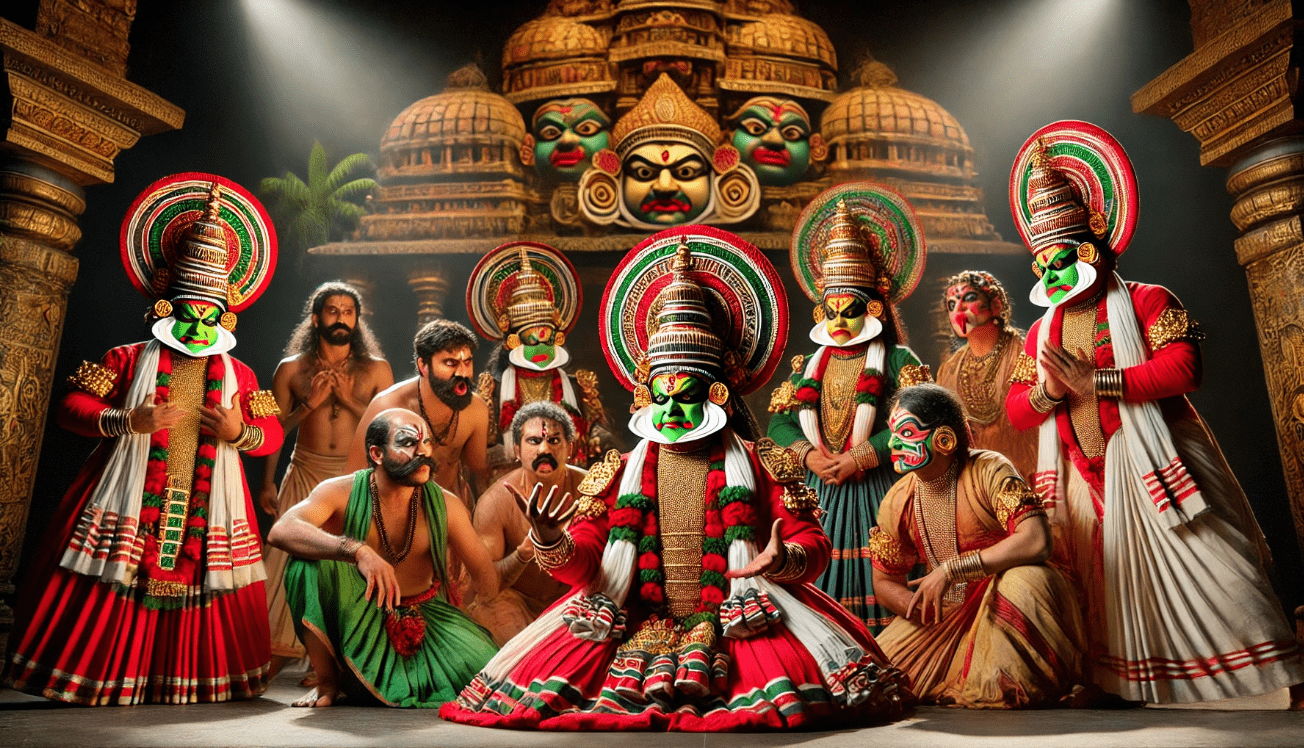
While Shakespeare is often celebrated for his mastery of language and character development, his influence extends beyond the written word—he also contributed to the evolution of theatre technology and stagecraft. Even in his time, Shakespeare’s productions were innovative, setting the stage for future technological advances that continue to shape theatre today. Let’s explore how his work influenced theatre technology and what we can learn from his innovations. 🎭
Simplicity and Creativity in Stage Design
Shakespeare’s plays were often performed on minimalist stages, such as the Globe Theatre, which lacked the elaborate backdrops and complex set designs we see in modern theatres. The focus was placed on the actors and the story, rather than on elaborate scenery. However, this simplicity didn’t limit creativity—it encouraged inventive approaches to staging. For example, Shakespeare’s use of “dressing” the stage (using minimal props and strategic lighting) allowed for quick scene changes and a dynamic storytelling experience.
The Role of Lighting and Sound in Shakespearean Productions
Shakespeare’s plays were performed during the day, relying on natural light from the sun, but directors still found creative ways to use lighting and sound to enhance their productions. For example, the changing light throughout the day subtly reflected the progression of time in the play, while sound effects (like trumpets or drums) added excitement and drama. These early uses of light and sound laid the foundation for modern theatre’s emphasis on atmosphere and mood.
The Evolution of Special Effects
While Shakespeare didn’t have access to modern special effects, his plays often incorporated elements of spectacle that would have been groundbreaking for the time. A Midsummer Night’s Dream, for example, featured fairy magic and supernatural elements that, even without the technology we have today, captivated audiences with clever staging and imaginative effects. This early experimentation with fantasy and spectacle paved the way for the advanced special effects we see in theatre today.
Innovation in Costume Design
In Shakespeare’s time, costumes played a significant role in conveying character and status, as well as creating an immersive world for the audience. Actors often wore elaborate costumes that signified not only their role but also the play’s tone. These visual elements helped audiences understand the characters quickly, especially in the open-air theatres where performances were viewed from a distance.
Shakespeare and the Rise of “Theatrical Innovation”
Shakespeare’s time also saw the rise of theatrical innovations like the proscenium arch, which provided a more structured space for the performance. This innovation became a staple of theatre architecture, creating a “picture frame” effect that separated the audience from the action on stage. The proscenium stage setup has remained popular for centuries and is still the basis for many modern theatre venues.
VI. Shakespeare’s Influence on Global Theatre Practices
Shakespeare’s influence reaches far beyond England. His works have traveled the world, adapting to different cultures, languages, and traditions. From the bustling streets of London to the vibrant stages of Tokyo, Shakespeare’s plays have left an indelible mark on global theatre. In this section, we’ll explore how Shakespeare’s works have shaped theatre practices around the world and why his influence is still so powerful today. 🌍🎭
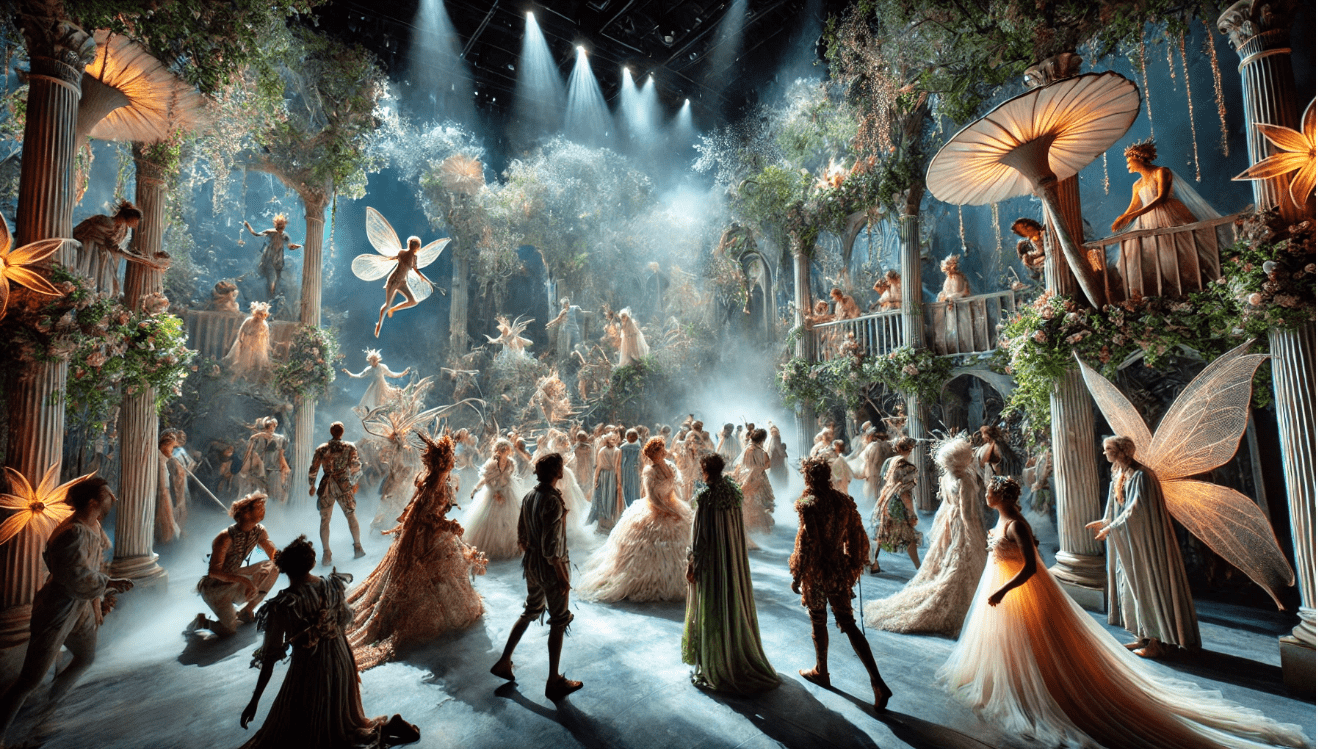
Shakespeare’s Universality: Themes That Transcend Culture
At the core of Shakespeare’s global appeal is the universality of his themes. Love, betrayal, ambition, power, and identity—these are themes that resonate with audiences regardless of their cultural background. Shakespeare’s ability to explore complex human emotions and relationships has made his works relatable to people in virtually every corner of the globe.
Shakespeare in Non-Western Theatre Traditions
While Shakespeare’s plays are deeply rooted in Western theatre, they’ve been successfully integrated into non-Western traditions as well. For example, in India, Macbeth has been adapted into Maqbool (2003), set in the backdrop of contemporary politics, while King Lear has been reinterpreted through Indian classical performance styles. In Japan, Shakespeare’s plays have been staged using the stylized conventions of Noh and Kabuki theatre, creating a fusion of Western narratives with traditional Eastern forms.
Shakespeare’s Influence on Global Playwrights
Shakespeare’s works have also influenced playwrights worldwide. In Africa, for example, Nigerian playwright Wole Soyinka drew on Shakespeare’s themes in works like The Man Died, creating plays that resonate with African socio-political contexts. In Latin America, playwrights such as Argentine Roberto Arlt were inspired by Shakespeare’s exploration of human psychology and power dynamics. Even contemporary playwrights like Tom Stoppard and Edward Albee have cited Shakespeare as a key influence in shaping their approach to character and dialogue.
Shakespearean Festivals and International Productions
Shakespeare festivals are a testament to his worldwide appeal. From the Shakespeare Festival of Stratford-upon-Avon in England to Shakespeare in the Park in New York City, these festivals celebrate Shakespeare’s legacy. More notably, festivals like the Shakespeare Globe to Globe tour have taken Shakespeare’s plays to over 200 locations around the world, showcasing how his works can be adapted to diverse languages and cultures.
Shakespeare and the Rise of Multicultural Theatre
Shakespeare’s ability to adapt to different cultures and the evolution of multicultural theatre practices have paved the way for a more inclusive stage. Many modern productions combine Shakespearean dialogue with local customs, languages, and performing arts. For example, in South Africa, productions of A Midsummer Night’s Dream incorporate local music and dance, while Brazilian theatre has embraced Shakespeare’s works with a focus on indigenous storytelling traditions.
Shakespeare’s Influence on Contemporary Global Cinema
Beyond the stage, Shakespeare’s impact on global cinema cannot be overstated. From Romeo + Juliet (1996) by Baz Luhrmann to Throne of Blood (1957), Akira Kurosawa’s Japanese take on Macbeth, Shakespeare’s plays have inspired countless adaptations in film. These adaptations often modernize the stories while preserving the essence of Shakespeare’s characters and themes, making them relevant to today’s global audience.
VII. Modern Theatre Movements Inspired by Shakespeare
Shakespeare’s work continues to inspire modern theatre movements, blending classical techniques with contemporary sensibilities. From experimental productions to innovative adaptations, Shakespeare’s influence can be seen in many modern theatrical trends. Let’s explore how his legacy has shaped the way we approach theatre today and how you can incorporate his influence into your own work. 🎭✨
The Rise of Contemporary Adaptations
Shakespeare’s plays have been reimagined countless times, often with modern settings, updated language, or unique cultural adaptations. These contemporary takes on his work keep the heart of his plays intact while making them accessible to new audiences. For example, Baz Luhrmann’s Romeo + Juliet (1996) set in modern-day America, or the 2019 film The King, a gritty adaptation of Henry V, are both examples of how Shakespeare’s themes of power, love, and conflict continue to resonate in the present.
Immersive Theatre: Bringing Shakespeare into New Spaces
Immersive theatre is an innovative movement that involves the audience in the action, often by having them move through different spaces or interact with the performers. Shakespeare’s plays, with their rich characters and dynamic settings, lend themselves particularly well to this kind of immersive experience. Productions like Sleep No More (an adaptation of Macbeth) and immersive versions of A Midsummer Night’s Dream transport the audience into the world of the play, allowing them to explore and experience the narrative firsthand.
The Influence of Shakespeare on Physical Theatre
Shakespeare’s dynamic language and emotional depth have inspired the development of physical theatre, a genre where movement and gesture often carry as much significance as spoken word. The intense emotional arcs in his plays, from Hamlet’s madness to Juliet’s passion, translate powerfully into physical theatre, where actors use their bodies to communicate complex emotions. Physical theatre companies around the world, such as Complicité, often incorporate elements of Shakespeare’s work, drawing on his ability to tell stories through physical presence.
Shakespeare and the New Wave of Deconstructed Theatre
In recent years, the “deconstructed” approach to theatre has gained popularity. This style often involves breaking down the traditional structure of a play, de-emphasizing linear storytelling, and playing with the audience’s expectations. Shakespeare’s works, with their layered meanings and multiple perspectives, are perfect candidates for this approach. Productions like The Tempest or King Lear have been deconstructed to explore themes of identity, illusion, and reality in non-traditional ways, allowing directors and actors to experiment with form.
Shakespeare in Feminist and Queer Theatre
Shakespeare’s plays have also found a new life in feminist and queer theatre movements, where his characters are reinterpreted through modern lenses. Feminist readings of characters like Lady Macbeth and Ophelia explore themes of gender and power, while queer adaptations of his works, such as Twelfth Night or As You Like It, often highlight themes of love, identity, and fluidity. These reinterpretations challenge traditional views of Shakespeare’s characters and bring new, inclusive perspectives to the stage.
Shakespeare in Digital and Virtual Theatre
As technology continues to evolve, so does the way we experience theatre. The rise of digital and virtual theatre has opened up new possibilities for Shakespearean productions. Virtual reality (VR) and online platforms have allowed productions of Shakespeare’s plays to reach global audiences, breaking down geographical and physical barriers. For example, The Tempest has been adapted into an immersive VR experience, and live-streamed productions allow theatre lovers to enjoy performances from the comfort of their own homes.
Shakespeare’s Enduring Impact on Modern Theatre
Shakespeare’s influence on modern theatre is immeasurable. From his groundbreaking approach to character development and storytelling to his role in shaping stagecraft, acting techniques, and theatrical genres, Shakespeare laid the foundation for many of the practices we see in theatre today. His ability to blend comedy, tragedy, and history into dynamic, multifaceted plays has inspired countless generations of theatre artists, directors, and playwrights. 🌟
As we’ve explored, his legacy is alive in everything from immersive theatre and modern adaptations to digital performances and global reinterpretations. Shakespeare’s works are not just historical relics; they continue to evolve, offering fresh perspectives and new life in diverse cultural contexts across the world.
Whether you are an actor, director, playwright, or theatre enthusiast, understanding how the role of Shakespeare’s plays in shaping theatre practices has transformed modern theatre is invaluable. By embracing his innovations and adapting his timeless themes to contemporary forms, you can contribute to the ongoing evolution of the art form.
Shakespeare’s influence proves that theatre is more than just entertainment—it’s a powerful tool for exploring the depths of the human experience, breaking boundaries, and connecting audiences across time and space. As we continue to explore, innovate, and experiment, Shakespeare’s work will remain a cornerstone of theatre’s rich and dynamic future. 🎭✨
Frequently Asked Questions (FAQs)
1. How did Shakespeare influence modern theatre?
Shakespeare revolutionized modern theatre by introducing complex characters, blending genres, and exploring universal themes like love, betrayal, and power. His influence is evident in contemporary acting, storytelling techniques, and stage design, shaping both traditional and modern theatre practices worldwide. 🎭
2. What role did Shakespeare play in the development of acting techniques?
Shakespeare’s works pushed actors to explore deeper emotional layers and complexity in their characters. His use of soliloquies and intense emotional conflicts helped shape modern acting techniques, including method acting, which focuses on fully immersing oneself in a character’s psyche. 🎤
3. How did Shakespeare’s stage design influence modern theatre?
Shakespeare’s minimalistic stage design emphasized storytelling through actors and language rather than elaborate sets. This simplicity paved the way for modern theatre’s focus on powerful performances and flexible staging, where atmosphere and emotion are key rather than relying on extravagant visuals. 🎨
4. How did Shakespeare shape modern playwriting?
Shakespeare’s ability to blend tragedy, comedy, and history within one play set a precedent for modern playwrights to experiment with genre and tone. His intricate plots, character-driven narratives, and use of poetic language have become essential components in contemporary theatre scripts. ✍️
5. What is the impact of Shakespeare on global theatre practices?
Shakespeare’s plays have been adapted and performed worldwide, influencing various cultural traditions and creating cross-cultural theatre. His universal themes resonate globally, making his works adaptable to different languages, customs, and performance styles, enriching global theatre. 🌍
6. How are Shakespeare’s themes still relevant in today’s theatre?
Shakespeare’s exploration of human emotions like love, ambition, and jealousy continues to resonate with audiences. Modern theatre adapts his timeless themes to address contemporary issues, making them relatable to diverse audiences across cultures and time periods. 💡
7. What is the connection between Shakespeare and immersive theatre?
Shakespeare’s works, rich in action and vivid characters, are well-suited to immersive theatre. Modern productions like A Midsummer Night’s Dream in immersive formats allow audiences to engage directly with the play’s world, reflecting Shakespeare’s early focus on audience interaction and experience. 🌟
8. How did Shakespeare influence modern adaptations and reimaginings?
Shakespeare’s stories have been endlessly adapted into modern settings, films, and digital formats. His flexible narratives and complex characters allow for reimaginings in contemporary contexts, as seen in films like Romeo + Juliet and the modern reinterpretation of Macbeth in various cultural settings. 🎬
